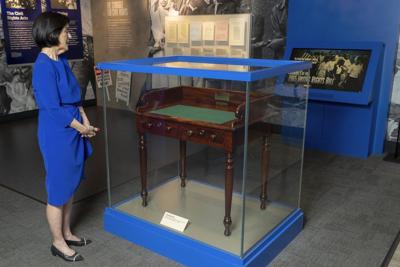WASHINGTON (AP) — The Voting Rights Act of 1965 was follow-up legislation to the Civil Rights Act passed a year earlier. In a break from tradition, then-President Lyndon Johnson went to Capitol Hill to sign the bill rather than hold a signing ceremony at the White House.
His daughter told The Associated Press in that he did it to honor the courage of members who had supported the legislation even though it could cost them their seats in Congress.
What did the Voting Rights Act do?
There were several elements to , but it primarily ended the discriminatory practices against Black voters that were prevalent in many states, including poll taxes and literacy tests that allowed those voters to be turned away. The law also established a process known as , which required that all or parts of 15 states with a history of discriminatory practices in voting get federal approval before making changes to the way they hold elections.
What did voter suppression look like before the law was enacted?
The 15th Amendment was ratified in 1870 and barred states from preventing people from voting on the basis of race, color or a previous condition of servitude. Despite the amendment, several Southern states were able to enact that were not required of white citizens who had either voted or were descendants of voters from before the ratification of the 14th Amendment. That tactic was known as the grandfather clause and worked to exclude Black voters.
Black citizens also were excluded in some states from participating in party primaries. Poll taxes, or fees for voting, were a barrier, and lynching and other forms of violence served to intimidate would-be Black voters.
What fueled the passage of the Voting Rights Act?
Civil rights activists were holding in Alabama in 1965 when . Afraid he would be lynched, his supporters planned a night protest march to the jail from a nearby church. They were met by police. A church deacon, Jimmie Lee Jackson, was fatally shot in the ensuing melee.
The Southern Christian Leadership Conference and local leaders considered taking Jackson’s body from Marion to Montgomery. Instead, he was buried near Marion and plans were made to stage a march from Selma, 30 miles (48 kilometers) away and a more logical staging area. In what became known as , on March 7, 1965, hundreds of marchers were met by state troopers, who attacked them on the Edmund Pettus Bridge. Footage of the violence shocked the country and provided momentum for the landmark federal law.
When did the voting rights protections begin to erode?
In 2013, the Supreme Court issued known as Shelby v. Holder that removed the preclearance requirement in the law. Within hours, states began announcing changes to their laws that began restricting voting rights. That after President Donald Trump began his loss for reelection was due to widespread fraud.
Where are we now?
The Supreme Court is deciding whether to hear in which the 8th Circuit Court of Appeals has held that private individuals and entities cannot file voting rights challenges. This is how the vast majority of such cases have been brought. The court has said that only the U.S. attorney general can file those cases. have made . Other circuits have ruled that there is for such challenges.
Separately, the Supreme Court is waiting to be briefed by attorneys in that centers on whether a congressional district drawn to benefit Black voters is constitutional. At issue is Section 2 of the Voting Rights Act, which requires political maps to include districts where minority populations’ preferred candidates can win elections.
There also are ongoing actions at the state level as well as by Trump and that would require documented proof of citizenship to register to vote.
___
Follow the AP’s coverage of voting rights at .























